Souk-Al-Magreb
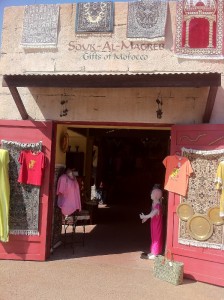 When traveling there are three things that most everyone will try to fit in: eating, exploring, and shopping. You have to eat, so you might as well make the best of no matter where you are. Humans are quite curious, and often more willing to learn new things than we might realize – exploration (adventure!) helps with that. And once you’ve filled your belly and your brain, there are new things to be had or at the very least seen (for all you window shoppers).
When traveling there are three things that most everyone will try to fit in: eating, exploring, and shopping. You have to eat, so you might as well make the best of no matter where you are. Humans are quite curious, and often more willing to learn new things than we might realize – exploration (adventure!) helps with that. And once you’ve filled your belly and your brain, there are new things to be had or at the very least seen (for all you window shoppers).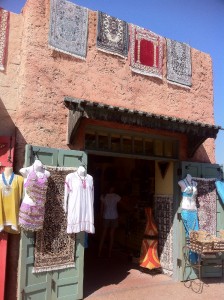
The World Showcase at Epcot seems almost perfectly designed to meet all of these needs. Eleven countries are represented in a manner that provides education and entertainment as a complete package for you to enjoy. And each pavilion has places to eat, explore, and shop – you can get lost in a menu, an exhibit, or a store.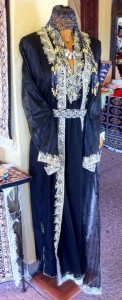
The Morocco Pavilion at Epcot’s World Showcase is certainly one of the more unique of the group. It has three things that make it stand out from the other pavilions: it was the first pavilion to be added after the Epcot’s initial opening, it’s also the only pavilion that is sponsored by the country itself rather than a corporation, and it does not participate in the light show portion of IllumiNations due to the religious significance of it’s architecture.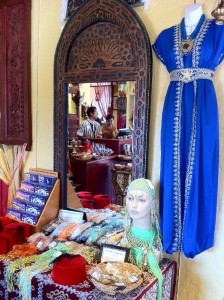
One interesting aspect that I find as a result of this is that the shopping seems to be a bit more natural in the Morocco Pavilion. I suspect it’s because of the less commercial nature of this pavilion. Everything within it seems more designed to blend in rather than stand out. That is of course for one shop which is found across the World Showcase concourse from the pavilion.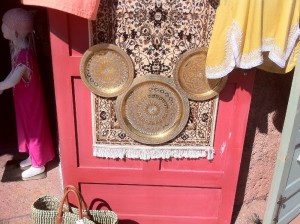
Souk-Al-Magreb, literally translated as “Morocco Market”, has the subtext “Gifts of Morocco”. It’s placement is right next to a garden irrigated by a waterwheel, and the stage used for the show Mo’Rockin. Many who seem to breeze right past the pavilion itself will still be caught by the allure of this store and drawn in. This is no doubt assisted by the Hidden Mickey made from brass plates that can be found on the door (it’s position changes from time to time).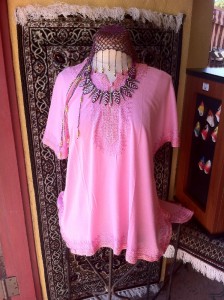
This store is designed as a cornerstone store in what would be a larger open air market of the kind often found in middle eastern cities. So instead of being a tent or a simple blanket propped up by sticks, the wares are contained inside what is a piece of the architecture of what is intended to be a much larger city. A taste of what lies beyond in the much larger bazaar if you were in say Fes or Marrakesh.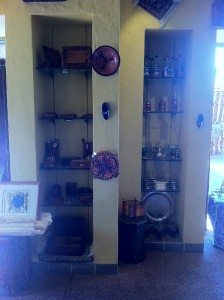
When mentioned online I always see the wares of Souk-Al-Magreb described as guides to belly dancing, fez hats, and couscous. Sure at the main counter you’ll find incense, souvenir cups, and DVDs, but inside the store you can find so much more. For example, there are some gorgeous Persian-style rugs contained within. These rugs are always designed with very intricate patterns due to various religious restrictions on depicting living creatures in artwork. Rug prices vary greatly based on size and design.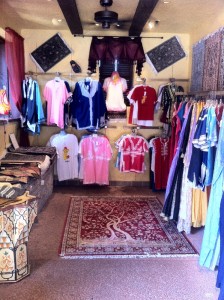
Let’s also not forget the famous nature of Moroccan colored glass. Reds, blues, greens, oranges… all can be found within. From lanterns to cups, and incorporated into various ceramics and tiles. You can often find examples of all of these within and prices, items and styles can vary greatly in this area. Smaller cups were $14 with prices increasing along with size.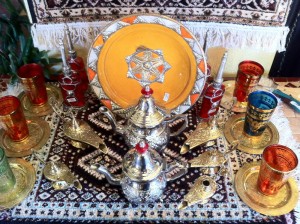
If you’re looking for some interesting clothing and jewelry with unique qualities and designs this is a great store to find that. As Morocco is a very mineral rich country their jewelry designs tend to reflect that. Often incorporating shells, metals, and various stones – especially turquoise. The jewelry seems reasonably priced starting at around $31 and up, though some pieces are much more expensive – often based on the refinement level of the turquoise.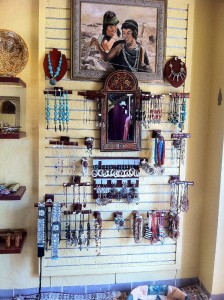
Clothing starts from simple more touristy t-shirts for about $20-$25, but gets so much better from there. Scarves and beaded head wraps can be found throughout the store. As are some very intricately designed clothing pieces. Some are clearly machined, but others are so finely detailed as to be unique. While some of these pieces can be as low as $20 to $40, some of the more prominently displayed ones often are $100 or more. There are many hand crafted partially leather and partially woven handbags throughout the store that seem to be about $75.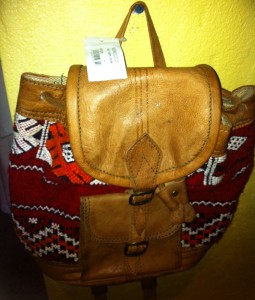
Several more tchotchkes are found throughout the store. And I’ll be honest, because of the nature of the items in the store you can often spot the authenticity of the item by its price tag. For example, you should probably resist the urge to buy the Salt & Pepper Pinchers and the 3” King Tut bust despite their $10 price tags. However, if you’re really into Aladdin and the mythos of the magic lamp, then parting with $28 for one might be right up your alley. There are also wind chimes, dishes, and other assorted goods.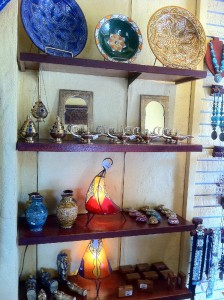
It’s important to note that just because you’ve been through this store once, doesn’t mean you shouldn’t return on a subsequent visit to Epcot. Due to the more custom and unique nature of many of the items within, the stores inventory changes very often. And while the more tourist oriented items remain, things like the clothing, rugs, jewelry, and other accessories can be vastly different. So don’t hesitate to visit and revisit this shop when you can.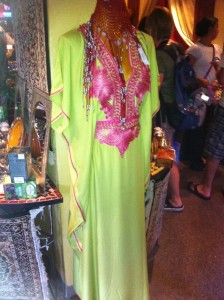
What about you? Have you been to Souk-Al-Magreb? Have you just window shopped? Have you bought anything there? For yourself? As a gift? What was it? Thanks for shopping.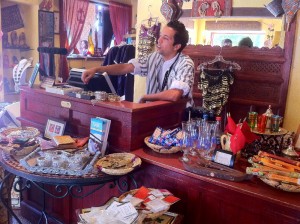





I was by here on vacation, it was beautiful. Is there a sight to purchase any of the clothing?
Thank you for highlighting this often overlooked treasure.
No problem Adam. I agree, it’s sad that so many just walk by.